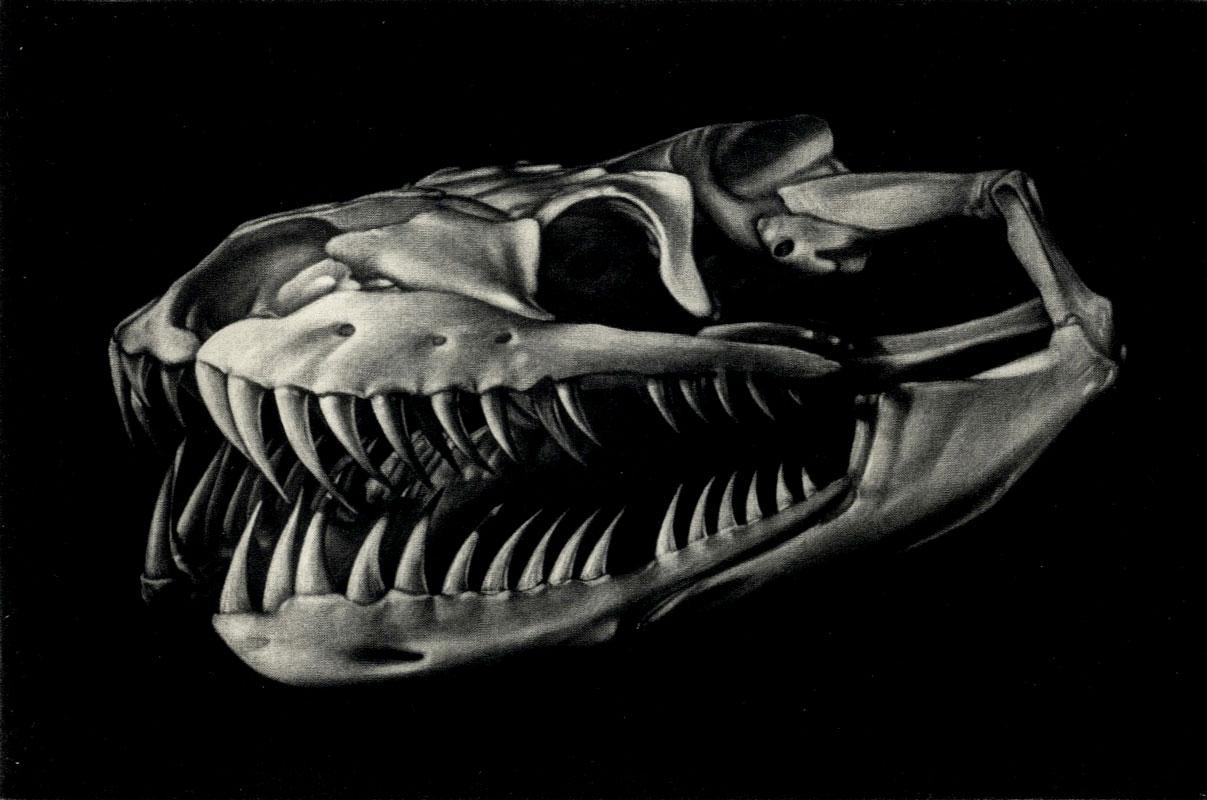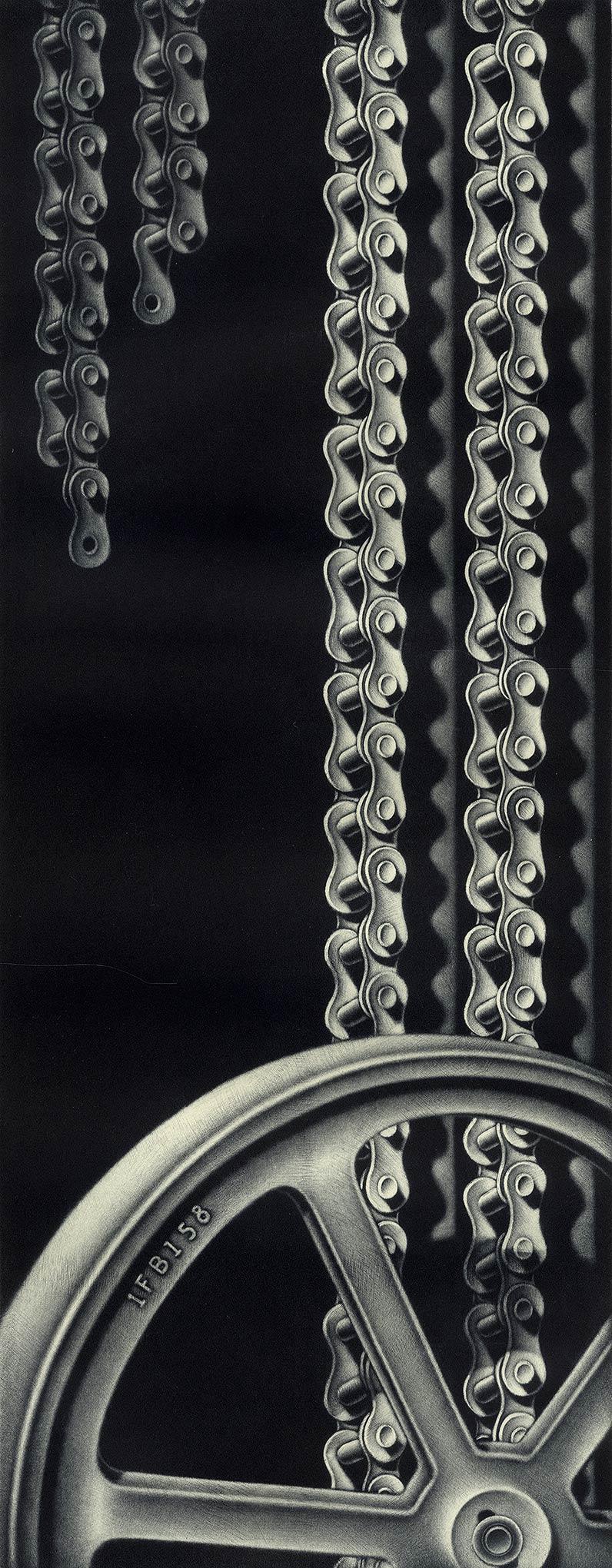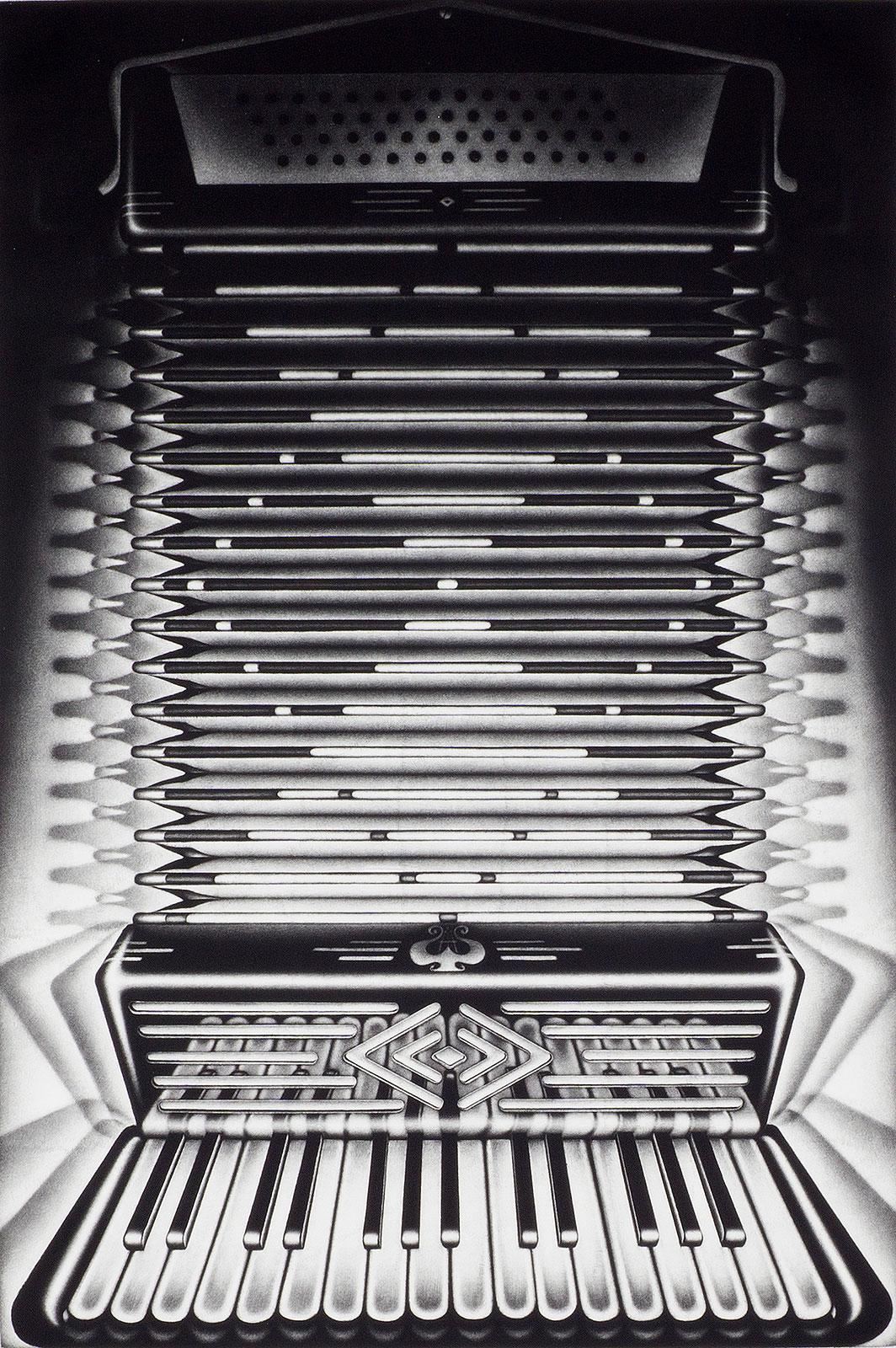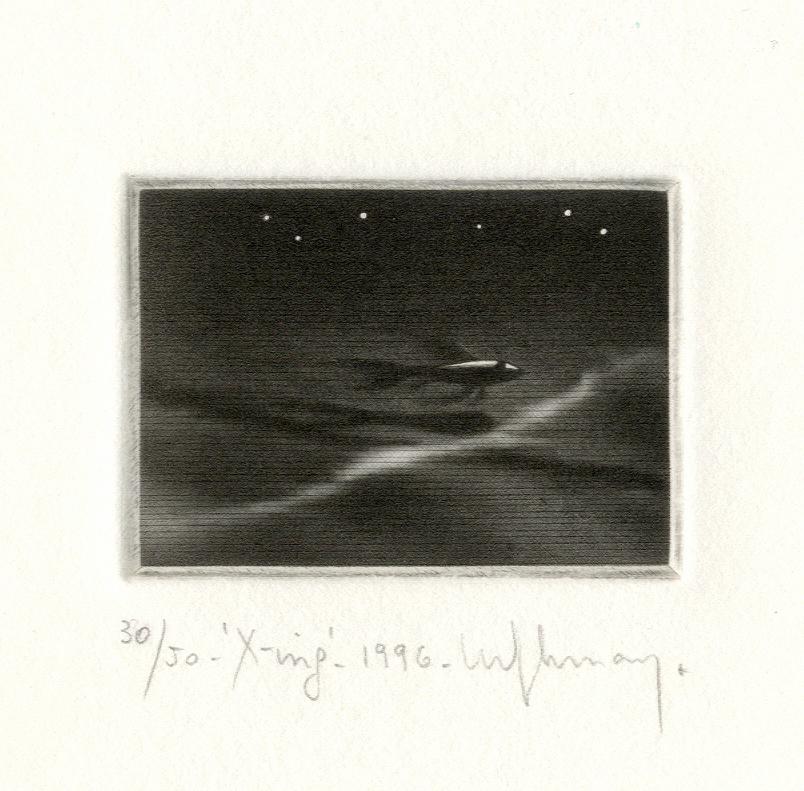Items Similar to Lemon Tree
Want more images or videos?
Request additional images or videos from the seller
1 of 6
Kazuhisa HondaLemon Treec. 1980s
c. 1980s
About the Item
Kazuhisa Honda (b. 1948)
"Lemon Tree" c. 1980s
Mezzotint
Signed Lower Right
Numbered Lower Left 81/250
Site Size: approx. 8 x 5 inches
Framed Size: approx. 16 x 2.5 inches
- Creator:Kazuhisa Honda (1948, Japanese)
- Creation Year:c. 1980s
- Dimensions:Height: 16 in (40.64 cm)Width: 12.5 in (31.75 cm)Depth: 1 in (2.54 cm)
- Medium:
- Movement & Style:
- Period:
- Condition:
- Gallery Location:Missouri, MO
- Reference Number:1stDibs: LU74735834621
About the Seller
5.0
Vetted Seller
These experienced sellers undergo a comprehensive evaluation by our team of in-house experts.
Established in 1970
1stDibs seller since 2017
141 sales on 1stDibs
Typical response time: 22 hours
- ShippingRetrieving quote...Ships From: Missouri, MO
- Return PolicyA return for this item may be initiated within 2 days of delivery.
More From This SellerView All
- Brown CottonwoodLocated in Missouri, MOBrown Cottonwood, 2005 By Andrew Millner (American, b. 1967) Lightjet Print Mounted on UV Plex Signed Lower Right Unframed: 87" x 44" Framed: 88" x 45" Andrew Millner is a visual artist based in St. Louis, MO. His work investigates the relationship between art and nature, the natural and the made. Millner received a BFA from University of Michigan, in Painting and Sculpture. He has had more than 56 group exhibitions since 1987 and over 15 solo exhibitions at institutions including Miller Yezerski Gallery, Boston, Massachusetts; Ellen Miller Gallery, Boston, Massachusetts; CCA, Santa Fe, New Mexico; Tria Gallery, New York City, New York; Richard Levy Gallery, Albuquerque, New Mexico; David Floria Gallery, Aspen, Colorado; Contemporary Museum St. Louis, St. Louis, Missouri. "I started drawing on the computer in 2005. Previous to that, most of my work had been about finding lines in nature; the contours of leaves, the ripples on rivers, the edges of overlapping hills. Although I was using traditional art materials, I prepared the canvases with slicker and slicker surfaces so that the lines wouldn’t soak into the background but sit on top, preserving the nuances of my hand. I thought of the drawings as photographic, in the diaristic sense of recording moments of time. I enjoyed the easy correspondence of the endless novelty of line in these natural forms and the endless variety of line created by my hand. I couldn’t draw the same leaf twice so my subject and process were well matched. I had the idea to draw every leaf of a tree, but I struggled with the scale and complexity of the subject. How does one bring a tree indoors? How can one see the whole tree and its individual parts simultaneously? I tried traditional strategies and materials but the results were unsatisfactory. I wondered if it would be possible to make the drawing on a computer. Since everything… music, photos, movies & books were being digitized, what about drawing? I wasn’t interested in something computer-generated, but sought to “dumb down” the computer and use it as a repository for simple line drawings. In the program I use, Adobe Illustrator, lines are called “paths”… an apt name since the line exists at no set scale or color. Only later do I assign the attributes of color and thickness. Taking my laptop outdoors, I drew my first tree “en plein air.” Using a digital tablet and pen, I drew simple contours of the leaves and branches. Having these drawings remain in digital form rather than in physical form, opened up interesting possibilities and enabled me to tackle the complexity of a tree in intriguing ways. My lines were free and separate from the background and from each other. I drew the branches individually and then later, I could cobble them together to reconstitute the whole tree. On the screen, I could zoom in and out and draw at different scales simultaneously. I could zoom out to draw a simple contour of the entire trunk and then zoom in to draw the smallest leaf with equal effort. I drew in layers so that as the drawings accumulated I could turn layers “off” so that they wouldn’t obscure subsequent layers. These two novelties, drawing at different scales simultaneously and making parts of the drawing invisible to allow for work on top or behind previous drawings, allowed for the accumulation of hundreds of simple outlines to create a dizzying visual complexity. Subsequent trees I drew from photographs. I would take hundreds of close-ups of a tree from a single point of view and then stitch all of these close ups together on the computer. Sometimes I photographed the same tree in the summer and then in the fall after it lost its leaves. This allowed me to see and draw all of the branches and limbs unadorned and unobscured. I would draw the tree twice, with and without leaves, merging the two drawings into one document. In this way, the drawings comprise and compress great spans of looking over vast time frames and seemingly contradictory close-up and distant points of view. My digital drawings have been outputted in different ways… mostly as photographs printed directly from the digital file or as archival inkjet prints. The results defy easy categorization. Are they drawings, prints, or camera-less photographs...Category
21st Century and Contemporary American Modern Still-life Prints
MaterialsPlexiglass, Inkjet
- Apple (Poster) -- signedBy Roy LichtensteinLocated in Missouri, MOHand-Signed and dated Lower Right Original screenprint poster in yellow, red, blue an black on white wove paper. Designed by the artist for a traveling exhibition for the Saint Lou...Category
1980s Pop Art Still-life Prints
MaterialsScreen
- Still Life on PorcelainBy Tom WesselmannLocated in Missouri, MOTom Wesselmann, (1931-2004) "Still Life" (Stilleben) 1988 Porcelain with Polychrome Ed. 169/299 Porcelain Size: approx. 13 x 14 inches Overall Size: approx. 18 3/4 x 20 inches Foun...Category
1980s Pop Art Still-life Prints
MaterialsPorcelain
- Portrait of Margaret van EyckBy Samuel Arlent EdwardsLocated in Missouri, MOA mezzotint by Samuel Arlent Edwards after the 1439 oil on wood painting by the Early Netherlandish master Jan van Eyck, titled, Portrait of Margaret van Eyck. The print is signed to the lower right margin. The image depicts the van Eyck’s wife, clothed in a red robe lined in squirrel fur...Category
19th Century Figurative Prints
MaterialsMezzotint
- Helicopters, Mountains, People (from The Valley Suite)By Keith HaringLocated in Missouri, MOHelicopters, Mountains, People (from The Valley Suite) by Keith Haring (1958-1990) Without Frame: 10" x 8.75" With Frame: 18.25" x 17.25" Signed and Dated Lower Right Edition 31/80 Lower Left "The Valley" is a group of etchings...Category
Late 20th Century Pop Art Figurative Prints
MaterialsEngraving
- "Mlle Landsberg" (grade planche, pl. 16)By Henri MatisseLocated in Missouri, MO"Mlle Landsberg" (grade planche, pl. 16), 1914 Henri Matisse (French, 1869-1954) Signed and Numbered Lower Right Edition 12/15 Image size: 7 7/8 x 4 5/16 inches Sheet size: 17 11/16 x 12 1/2 inches With frame: 19 1/2 x 14 1/2 inches Henri Matisse came from a family who were of Flemish origin and lived near the Belgian border. At eight o'clock on the evening of December 31, 1869, he was born in his grandparents' home in the town of Le Cateau in the cheerless far north of France. His father was a self-made seed merchant who was a mixture of determination and tightly coiled tension. Henri had no clear idea of what he wanted to do with his life. He was a twenty-year-old law clerk convalescing from appendicitis when he first began to paint, using a box of colors given to him by his mother. Little more than a year later, in 1890, he had abandoned law and was studying art in Paris. The classes consisted of drawing from plaster casts and nude models and of copying paintings in the Louvre. He soon rebelled against the school's conservative atmosphere; he replaced the dark tones of his earliest works with brighter colors that reflected his awareness of Impressionism. Matisse was also a violinist; he took an odd pride in the notion that if his painting eye failed, he could support his family by fiddling on the streets of Paris. Henri found a girlfriend while studying art, and he fathered a daughter, Marguerite, by her in 1894. In 1898 he married another woman, Amelie Parayre. She adopted the beloved Marguerite; they eventually had two sons, Jean, a sculptor and Pierre who became an eminent art dealer. Relations between Matisse and his wife were often strained. He often dallied with other women, and they finally separated in 1939 over a model who had been hired as a companion for Mme. Matisse. She was Madame Lydia, and after Mme. Matisse left, she remained with Matisse until he died. Matisse spent the summer of 1905 working with Andre Derain in the small Mediterranean seaport of Collioure. They began using bright and dissonant colors. When they and their colleagues exhibited together, they caused a sensation. The critics and the public considered their paintings to be so crude and so roughly crafted that the group became known as Les Fauves (the wild beasts). By 1907, Matisse moved on from the concerns of Fauvism and turned his attention to studies of the human figure. He had begun to sculpt a few years earlier. In 1910, when he saw an exhibition of Islamic art, he was fascinated with the multiple patterned areas and adapted the decorative universe of the miniatures to his interiors. As a continuation of his interest in the "exotic", Matisse made extended trips to Morocco in 1912 and 1913. At the end of 1917, Matisse moved to Nice; he would spend part of each year there for the remainder of his life. A meticulous dandy, he wore a light tweed jacket amd a tie when he painted. He never used a palette, but instead squeezed his colors on to plain white kitchen dishes...Category
1910s Fauvist Figurative Prints
MaterialsEtching, Drypoint
You May Also Like
- Still Life with Eggs - Original handsigned etching - Limited / 150By Mario AvatiLocated in Paris, FRMario AVATI Still Life with Eggs Original black manner etching Handsigned in pencil Numbered / 150 copies On vellum 38 x 48 cm (c. 15 x 19 in) Au...Category
1970s Modern Still-life Prints
MaterialsMezzotint, Etching
- Instumento de ReflexionBy Eduardo Leyva HerreraLocated in New Orleans, LAA copper mezzotint printed on Hahnemulle paper in an edition of 10. This is impression #1. Graduated from the National Academy of Fine Arts "San Alejandro" in 2005. Study of graphi...Category
21st Century and Contemporary Modern Landscape Prints
MaterialsMezzotint
- Python Sebae (African Rock Python Skull)By Jacob CrookLocated in New Orleans, LAPython is a hand-pulled mezzotint in an edition of 25. This is #7/25. Jacob Crook was born in St. Louis, MO in 1985. Crook works primarily in the intagli...Category
2010s American Modern Animal Prints
MaterialsMezzotint
- Missing LinkBy Carol WaxLocated in New Orleans, LAThis image is #12 from an edition of only 75, Carol Wax originally trained to be a classical musician at the Manhattan School of Music but fell in love with printmaking. Soon after...Category
2010s American Modern Still-life Prints
MaterialsMezzotint
- Vertical Zydeco (Making Cajun music with rhythmic patterns of light and shadow)By Carol WaxLocated in New Orleans, LACarol Wax's "Vertical Zydeco" reflects a fascination with ways to suggest sound and movement through rhythmic patterns of light and shadow. It is an edition of 75. The image is real...Category
1990s American Modern Still-life Prints
MaterialsMezzotint
- X-ing ( Alone fish swims across the ocean)By Anne DykmansLocated in New Orleans, LAIn "X-ing"", Anne Dykmans captures an image of solace with a swimming fish . This image is an artist's proof in an edition of 50 Anne Dykmans employs her superb command of engravin...Category
1990s Modern Animal Prints
MaterialsMezzotint
Recently Viewed
View AllMore Ways To Browse
Lemon Tree
Vintage Lemon Sign
Lemon Vintage Print
Brennie Brackett
Carolyn Muskat On Sale
Bubblegum Machine
David Halliday On Sale
30 Wayne Hills Mall
Ed Baynard On Sale
Reflections By Lee Teter
Hugh Kepets On Sale
Hermes Black City Bag With Pearls
J Whiteman Parker
Geraldine Girvan
Garden Talk Yuji Hiratsuka
Edward Joseph Lowe
Bloomingdales West Palm Beach
Bouqet Chagall




